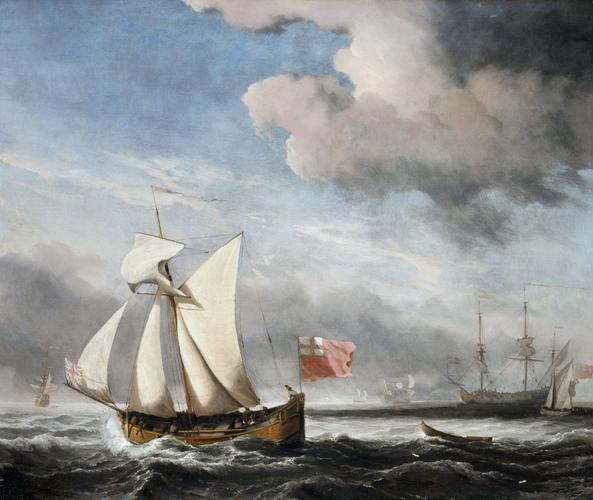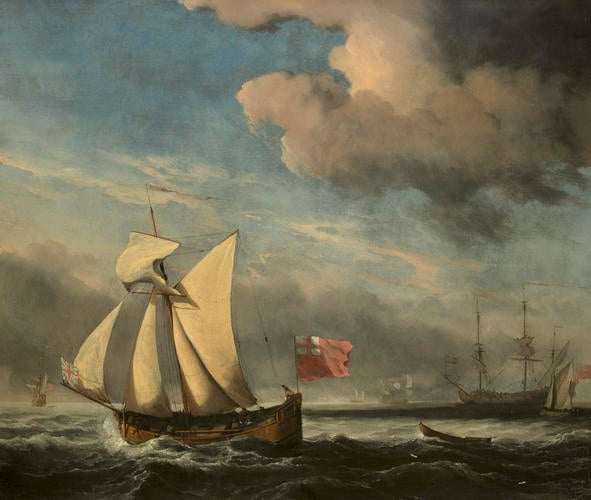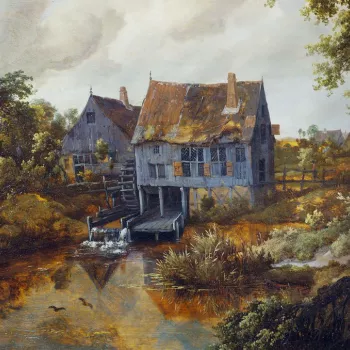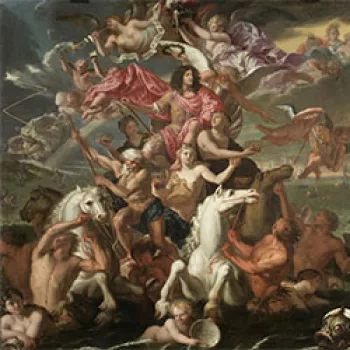The 'Royal Escape' in a Breeze c.1675
Oil on canvas | 63.4 x 75.8 cm (support, canvas/panel/stretcher external) | RCIN 405211
-
This painting commemorates the vessel in which Charles II escaped from England to France after his defeat at the battle of Worcester by Oliver Cromwell's forces in 1651. Protected by Royalist supporters, the King went into hiding after the battle, most famously taking refuge in an oak tree near Boscobel House, Shropshire, before making his way to the south coast. On 15 October 1651 Charles II paid one Nicolas Tettersell £60 to carry him from Shoreham to Fécamp, near Rouen in Normandy in a Brighthelmstone (now Brighton) coal-brig called the Surprise. After this ignominious flight and nine years in exile the King returned in triumph from Scheveningen in 1660 bringing with him a keen interest in Dutch recreational yachting. After the Restoration, the King purchased the Surprise, converted her into a smack-rigged yacht and re-named her the Royal Escape. She was usually moored off Whitehall until 1673, when she was handed over to the Navy.
The Royal Escape by Van de Velde (1633-1707) is here sailing close to the wind (or close-hauling), which means that it is only 30 or 45 degrees away from sailing directly into the wind. This is an exciting though perfectly possible manoeuvre and explains why the Royal Ensign streams backwards. The name of the ship and the yachtsman's brinkmanship represent the heroism of the King's escape from the storm clouds of rebellion towards the blue skies of a safe haven and glorious return. The British frigate calmly at anchor in the background is there to reassure us that this is more of a twentieth anniversary re-enactment of a royal escapade than the real thing.
The Dutch artist Willem van de Velde the Younger trained in Amsterdam with his father, Willem van de Velde the Elder, who specialised in recording ships and shipping, and the marine artist Simon de Vlieger c.1601–53). The van de Veldes came to London in 1672–3, and both father and son worked first or Charles II and then for James II. They were installed in a studio at the Queen's House, Greenwich, which they continued to use until 1691. James II, when Duke of York and Lord High Admiral, commissioned from both artists a series of 12 large 'sea-fights', painted between 1675 and 1683.
Signed lower left: 'W.V.V.'
Text adapted from Charles II: Art and Power, London, 2017Provenance
Probably painted for Charles II; first recorded in the Royal Collection in 1688
-
Medium and techniques
Oil on canvas
Measurements
63.4 x 75.8 cm (support, canvas/panel/stretcher external)
82.60 x 95.30 x 6.1 cm (frame, external)
Category
Object type(s)
Other number(s)











